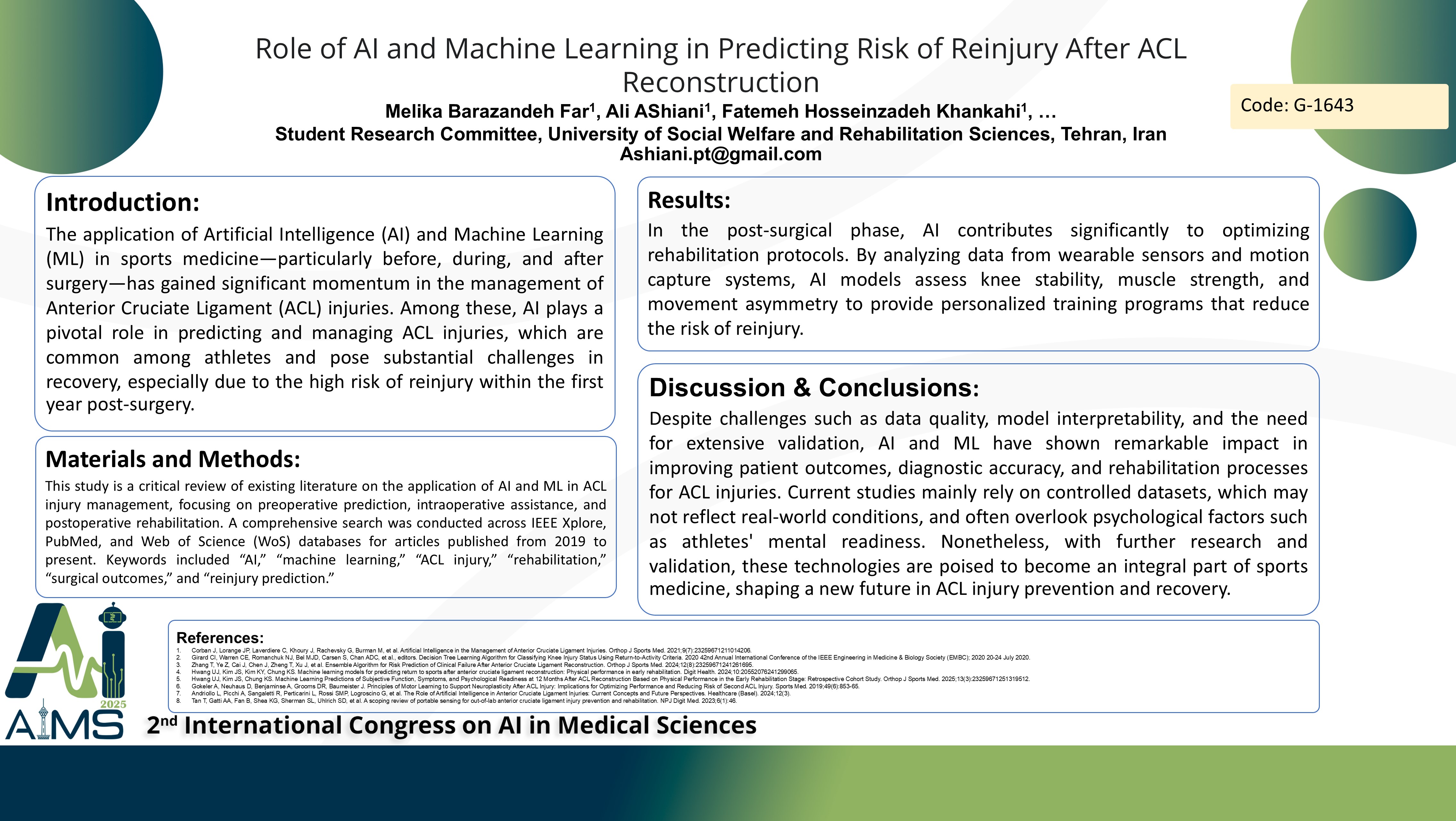نقش هوش مصنوعی و یادگیری ماشین در پیش بینی خطر آسیب مجدد پس از بازسازی ACL
کد: G-1643
نویسندگان: Melika Barazandeh Far ℗, Ali Ashiani *, Fatemeh Hosseinzadeh Khankahi
زمان بندی: زمان بندی نشده!
برچسب: سیستم های تصمیم یار بالینی
دانلود: دانلود پوستر
خلاصه مقاله:
خلاصه مقاله
Background and Aims: The application of Artificial Intelligence (AI) and Machine Learning (ML) in sports medicine—particularly before, during, and after surgery—has gained significant momentum in the management of Anterior Cruciate Ligament (ACL) injuries. Among these, AI plays a pivotal role in predicting and managing ACL injuries, which are common among athletes and pose substantial challenges in recovery, especially due to the high risk of reinjury within the first year post-surgery. Method: AI and ML techniques are utilized to analyze large datasets comprising biomechanical assessments, physical performance metrics, and medical imaging. Supervised learning algorithms such as Support Vector Machines (SVM), Random Forests, and Convolutional Neural Networks (CNN) have been employed to predict reinjury risk with high accuracy. These models are trained using data from motion analysis, muscle strength tests, and MRI scans to enhance diagnostic precision and predictive capabilities. Results: In the post-surgical phase, AI contributes significantly to optimizing rehabilitation protocols. By analyzing data from wearable sensors and motion capture systems, AI models assess knee stability, muscle strength, and movement asymmetry to provide personalized training programs that reduce the risk of reinjury. Conclusion: Despite challenges such as data quality, model interpretability, and the need for extensive validation, AI and ML have shown remarkable impact in improving patient outcomes, diagnostic accuracy, and rehabilitation processes for ACL injuries. Current studies mainly rely on controlled datasets, which may not reflect real-world conditions, and often overlook psychological factors such as athletes' mental readiness. Nonetheless, with further research and validation, these technologies are poised to become an integral part of sports medicine, shaping a new future in ACL injury prevention and recovery.
کلمات کلیدی
Sports Medicine, Machine Learning, ACL Injury
